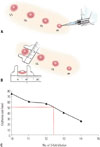|
AV-001 |
F/28 |
11.7 |
30077.65 |
AR |
t2, t3, t7, t8, t10, t11, t12, t70, t14, t16, g8, w1, w8, w10, w22, w21, d72, d1, d2, e1, e5 |
ND |
ND |
|
AV-002 |
M/45 |
10.3 |
7417.058 |
AR |
t7, t11, t12, t70, w1, w6, w7, w8, w10, w12, m1, d1, i6 |
8.45 (3) |
ND |
|
AV-003 |
F/43 |
15 |
815484.5 |
AR, AC |
w1, w6, w8 |
ND |
ND |
|
AV-004 |
M/45 |
13.6 |
201096 |
AR, AS, drug allergy |
t5, t7, t8, t10, t11, t19, t16, g8, g5, g12, g6, w1, w6, w7, w8, w10, w12, w9, w22, m1, m2, m5, d72, d1, d2, e1, e5, e3, e84, e73, i206 |
5.65 (3) |
ND |
|
AV-005 |
M/20 |
12 |
40600.58 |
AR |
t2, t3, t5, t7, w1, w6, w7, w8, w12, m3, d72, d1, d2 |
0.61 (1) |
284 |
|
AV-006 |
M/52 |
ND |
ND |
AR, OAS |
t1, t2, t3, t7, t8, t10, t11, t12, t70, t11, t16, t6, g6, w1, w6, w8, w10, w22, m1, e1, e5, e3 |
ND |
ND |
|
AV-007 |
M/46 |
14.9 |
737880.9 |
AR |
t2, t3, t7, t8, t10, t12, t70, t11, t15, t16, w6, w8, w9, w22, m1 |
ND |
ND |
|
AV-008 |
F/58 |
ND |
ND |
AR, AC |
t3, w1, w6, w22, d2, e5 |
25.5 (4) |
784 |
|
AV-009 |
F/46 |
12 |
40600.58 |
AR, AS, drug allergy |
w1, w6, w8 |
ND |
ND |
|
AV-010 |
M/19 |
14 |
300000 |
AR, AC, OAS |
t1, t2, t3, t7, t8, t10, t70, t15, t19, t16, g8, g2, g3, g6, w6, w8, w22, d72, d1, d2, e1, e5, i6, i206 |
4.81 (3) |
968 |
|
AV-011 |
M/34 |
14.9 |
737880.9 |
AR, AC |
t1, t2, t3, t7, t8, t10, t11, t12, t70, t11, t15, t19, t16, t16, t6, g8, g2, g3, g5, g6, w1, w6, w10, w9, w22, e1, e5, f11, d2 |
ND |
ND |
|
AV-012 |
M/19 |
ND |
ND |
AR, AC |
t1, t2, t3, t7, t8, t10, t11, t12, t70, t11, t15, t19, t14, t16, t6, g8, g2, g3, g5, g6, w1, w6, w10, w9, w22, w21, m1, m2, d1, d2, e3, i206, f11, f4 |
ND |
ND |
|
AV-013 |
F/53 |
13.3 |
148975.6 |
AR, AS, drug allergy |
t10, t16, g6, w6, w8, w22, w21, m1, m2, m3, m5, m6, d72, d1, d2, e1, e5, e3, e4, e6, i6, i206 |
3.66 (3) |
ND |
|
AV-014 |
M/41 |
14.4 |
447547.4 |
AR |
t1, g6, w6, w8, d1 |
ND |
ND |
|
AV-015 |
F/37 |
14.6 |
546635.6 |
AR |
t10, w1, w6, w8, w10, m2, d1, d2, e5 |
ND |
ND |
|
AV-016 |
M/23 |
ND |
ND |
AR |
w6, w8, w22, w21, m1 |
ND |
ND |
|
AV-017 |
F/20 |
ND |
ND |
AR, chronic urticaria, drug allergy |
w6, w8 |
ND |
ND |
|
AV-018 |
M/42 |
15.6 |
1485910 |
AR |
t1, g2, w1, w6, w8, w10, w22, d72, d1, d2, i6 |
ND |
ND |
|
AV-019 |
F/37 |
12.6 |
73979.09 |
AR |
w1, w6, w8, w10, w9, d1, d2, e1, e5, i6 |
ND |
ND |
|
AV-020 |
M/38 |
13 |
110363.8 |
AR, AS, AD |
t6, w6, w8, d1, d2, e1, e5 |
ND |
ND |
|
Mean |
|
13.55 |
60691.3 |
|
|
|
|











 PDF
PDF ePub
ePub Citation
Citation Print
Print



 XML Download
XML Download